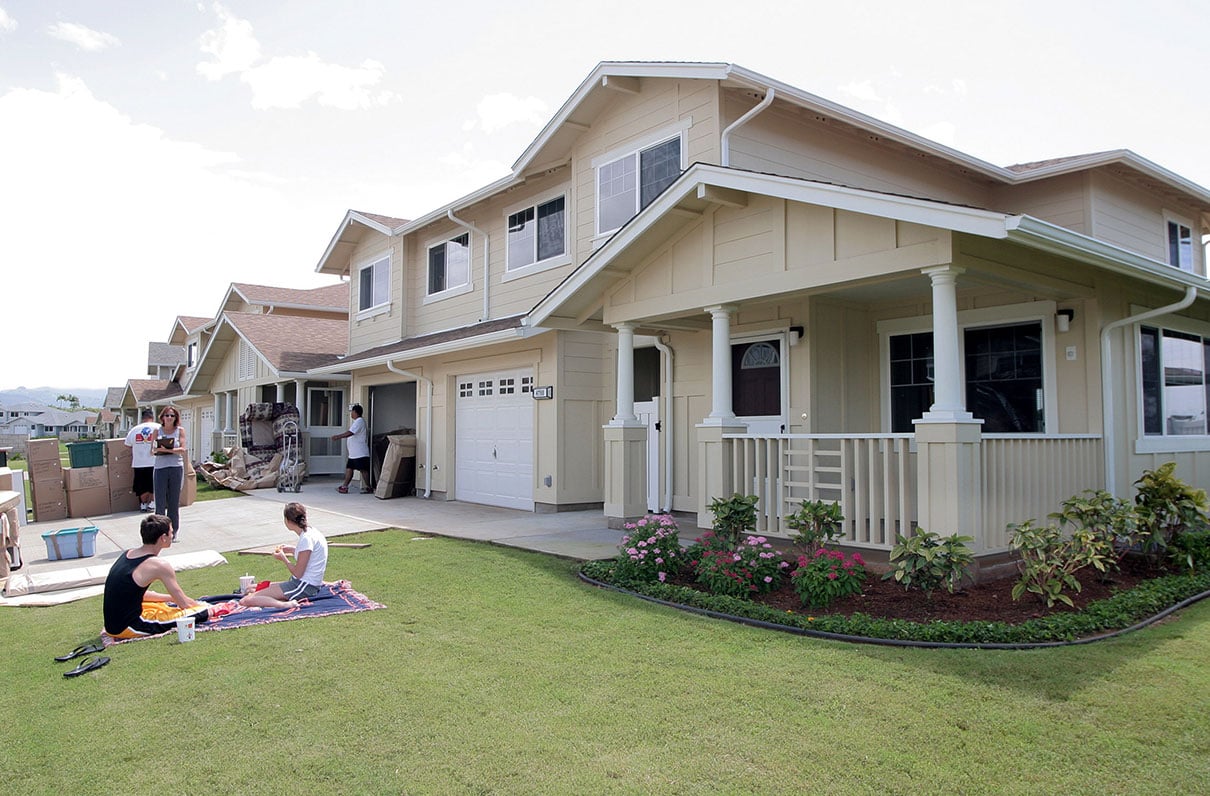The Military Family Readiness Council (MFRC), a congressionally mandated group, meets 2-3 times annually to review and evaluate DoD policies and programs related to military family readiness.
When the council meets Dec. 11, the Military Officers Association of America will present recommendations on two key issues: the Military Lending Act (MLA), and health and safety concerns in military housing.
The council is led by the undersecretary of defense for personnel and readiness (USD P&R). Currently performing the duties of USD (P&R) is the honorable James Stewart.
Here is more on these two key areas of concern:
Military Lending Act
The MLA was enacted in 2006 to address rampant abuses by consumer lenders against servicemembers and their families. It provides legal protections such as maximum interest rates of 36 percent on most consumer loans. It also prohibits mandatory allotments from military pay for loan payments, prohibits prepayment penalties, and makes it illegal for creditors to require servicemembers to waive their rights under the Servicemembers Civil Relief Act.
Protections provided in the MLA have recently come under threat. The Consumer Financial Protection Bureau, headed up by Mick Mulvaney, has stopped supervising financial institutions to ensure their compliance with the act. MOAA has been vigilant in ensuring protections provided by MLA remain in place by sending a letter to Defense Secretary Jim Mattis and Mulvaney and publishing it in a full-page ad along with other MSOs and VSOs.
MOAA is going the extra step to make the recommendation to the MFRC to preserve protections MLA provides as they are critical to the well-being of military families.
Military Housing
Health and safety hazards have run rampant in military housing and barracks, and the problems have gained national attention in the media. Military families have said they have struggled to get help from private contractors to address problems such as toxic mold, lead paint exposure, water damage/leaks, vermin, and asbestos, to name a few. Many military families have reported being diagnosed with illnesses and declining health due to these hazards. MOAA has tracked this issue closely, collected narratives from families experiencing these issues, and will share several recommendations to the council. These recommendations span multiple departments and would require buy-in from DoD officials:
- Hold a roundtable discussion on this issue between MSOs/VSOs and senior DoD leadership to answer questions and establish a way forward.
- Encourage GAO reports to measure the following:
- Extent of health and safety hazards in family housing, barracks, and military facilities.
- Roots of cause for health and safety hazards with emphasis on oversight gaps.
- Effect hazards have on the health and well-being of servicemembers and their families.
- Best practices to reduce risks to health and safety such as EPA recommendations and long-term vs temporary abatement plans.
- Amend public-private partnership housing contracts to give senior DoD officials and installation commanders more authority.
- Improve and standardize the tenant satisfaction survey at the military-service level and make surveys a requirement.
- Re-evaluate the definition of “historic home” to remove red tape and excessive cost in renovating old homes with no significant historical background.
- Improve communication between military treatment facilities and housing officials to address environmental health concerns families raise at doctor appointments.
- Ensure tenant rights on military bases mirror rights given to tenants off the installation.
MOAA will provide updates following the Dec. 11 council meeting. Specific questions can be sent to legis@moaa.org.

